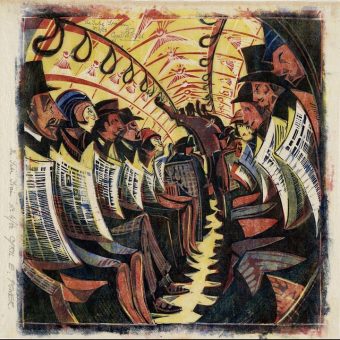“Hulme derives its name from the Old Norse holmr, holmi, through Old Danish hulm or hulme meaning small islands or land surrounded by streams, fen or marsh”
– Eilert Ekwall – The Place-Names of Lancashire, 1922

Do you hanker for the bygone, sometime in the misty past when England was an ideal and at its peak? The BBC’s review of Richard Davis’s photographs of Hulme in inner city Manchester says the area has been “lost to regeneration, the flats of Manchester’s Hulme were the home to poets, artists, musicians and drop-outs in the 1980s and 90s.” Was 1980s Hulme England’s 1960s Haight-Ashbury wrapped in a cagoule, a place of strolling minstrels, iambic pentameters and free thought before parts of the Beeb relocated to the industrial heartlands, bringing with it poncy puddings dished up to droning southern gobs full of laments about school fees and housing price gloats in restaurants and hotels styled on an absentee landlord’s London living rooms where the only things northern on offer are the views and prices?
Nostalgia clings and cloys like Prince Charles’s neo-Georgian Poundbury, a mentally debilitating, antiseptic toy town so middle-of the road is could be roadkill. Pity the town planners who replaced the banks of Hulme’s terraced homes with The Crescents, each named after a long dead English architect because, in the words of designer J. L. Womersley: “We feel that the analogy we have made with Georgian London and Bath is entirely valid. By the use of similar shapes and proportions, large-scale building groups and open spaces, and, above all, by skilful landscaping and extensive tree planning, it is our endeavour to achieve at Hulme a solution to the problems of twentieth-century living which would be the equivalent in quality that reached the requirements of eighteenth-century Bloomsbury and Bath.” Hail Adam Crescent, Charles Barry Crescent, William Kent Crescent and John Nash Crescent. Come marvel at the Thomas Hardy resort in breeze-block grey. Here was “a touch of eighteenth century grace and dignity to municipal housing,” cooed the Manchester Evening News. ”
The Georgian splendour was in name only. Built in 1972, Hulme’s regeneration from an area the Manchester Corporation damned in the 1940s as “Endless rows of grimy houses: no gardens, no parks, no community buildings, no hope”, what was the largest public housing development in Europe, was torn down in 1993. The Crescents were described by the Architects Journal as “Europe’s worst housing stock… hideous system-built deck-access block which gave Hulme its unsavoury reputation.” The 1978 World in Action report dubbed the place “a British Bantustan“.
But then, not everyone knew the place as home. Davis says the Hulme he lived in was rife with “inspiration and get up and go energy”. That verve is captured in his images of the place before it changed again. You can feel Hulme’s bite in the flat roofed pubs with the standard large dog on the roof, through the witty political graffiti and on the faces of people who lived there. Within walking distance to the city’s clubs and the gigs, was Hulme the essential Madchester?
Owen Hatherley says of the Crescents:
“A series of labyrinthine blocks accessed by street decks, all the things bemoaned as deleterious to family life… the complexity of the blocks, the noise and sense of height, the lack of a feeling of ‘ownership’ in the communal areas turned out to be ‘perfect’ for a different sort of tenant, Manchester’s young bohemians, who relished the estate’s air of decaying modernism. By the early 80s, it had an arthouse cinema, club nights run by the soon-to-be-famous Factory Records, and even a ‘Hulme look’ of intense youths in baggy secondhand suits. On the estate and in the city generally then, the very fact that [many] spaces were unused.. led to a sense of possibility absent from the sewn-up, high-rent city of today…
And now – what of today’s Manchester?
“Regenerated cities produce no more great pop music, great films or great art than they do industrial product. What they do produce is property developers.”


I grew up in Birmingham and left school at 16 in 1982 with no real qualifications and no idea what to do. I spent a few years on various worthless schemes, but mostly I was signing on. It was whilst on the dole my interest in photography really began. I got involved with the Birmingham Trades Council ‘Centre For The Unemployed’ and was encouraged to go out and photograph things that caught my eye out on the streets as well as the many political demonstrations around that time in the Midlands.
They had a darkroom at the centre which I really took too and it wasn’t long before I was teaching basic photography and darkroom skills to other unemployed people. I loved it and a life long love of photography began. Someone at the centre suggested I should look at getting a qualification in photography and before I knew it I was accepted onto a course at Manchester Polytechnic which began in September, 1988.
I’d always loved Manchester music so I didn’t need any persuasion in leaving Birmingham for a new life up north! On day one at the Poly we were all advised not to go into Hulme, a neighbouring district to where the Poly was sited. A dangerous, lawless place to be avoided we were told! So obviously the next day I decided to explore Hulme, see for myself. I never did like anyone telling me what I should or shouldn’t do.
Little did I know at the time this place would play a massive role and shape my life for many years to come. I took to Hulme straight away, how could you not, it was just so damn photogenic and so very different from anywhere I’d seen before. A lot of it was derelict, whilst what was occupied tended to consist of a diverse mix of artists, musicians, drop-outs, ex-students & the unemployed, the kind of people mainstream society seemed to reject.
It also had the most amazing creative spirit and sense of community, and for a lot of people a real source of inspiration and get up and go energy. I quickly made friends with various comedians, poets, musicians etc and word got out I had a camera and knew how to use it, it was that easy.
I moved into a squat in one of the four big crescents in Hulme and quickly turned it into a darkroom and studio. Ended up staying for about 5 years and although there was no plan, I managed to document life in Hulme over that time.
What’s interesting years later is looking back at these Images and everything you see is no longer there, the whole area gone, completely bulldozed. A new Hulme grew up in the mid to late 1990’s with better housing & normal facilities, families moved back into the area, but you know what …….. I really miss the old place, it was totally unique!
– Richard Davis


“all the things bemoaned as deleterious to family life . . . the complexity of the blocks, the noise and sense of height, the lack of a feeling of ‘ownership’ in the communal areas” turned out to be “perfect” for a different sort of tenant, Manchester’s young bohemians, who relished the estate’s air of decaying modernism. By the early 80s, it had an arthouse cinema, club nights run by the soon-to-be-famous Factory Records, and even a “Hulme look” of intense youths in baggy secondhand suits. On the estate and in the city generally then, writes Hatherley, “the very fact that [many] spaces were unused . . . led to a sense of possibility absent from the sewn-up, high-rent city of today”.

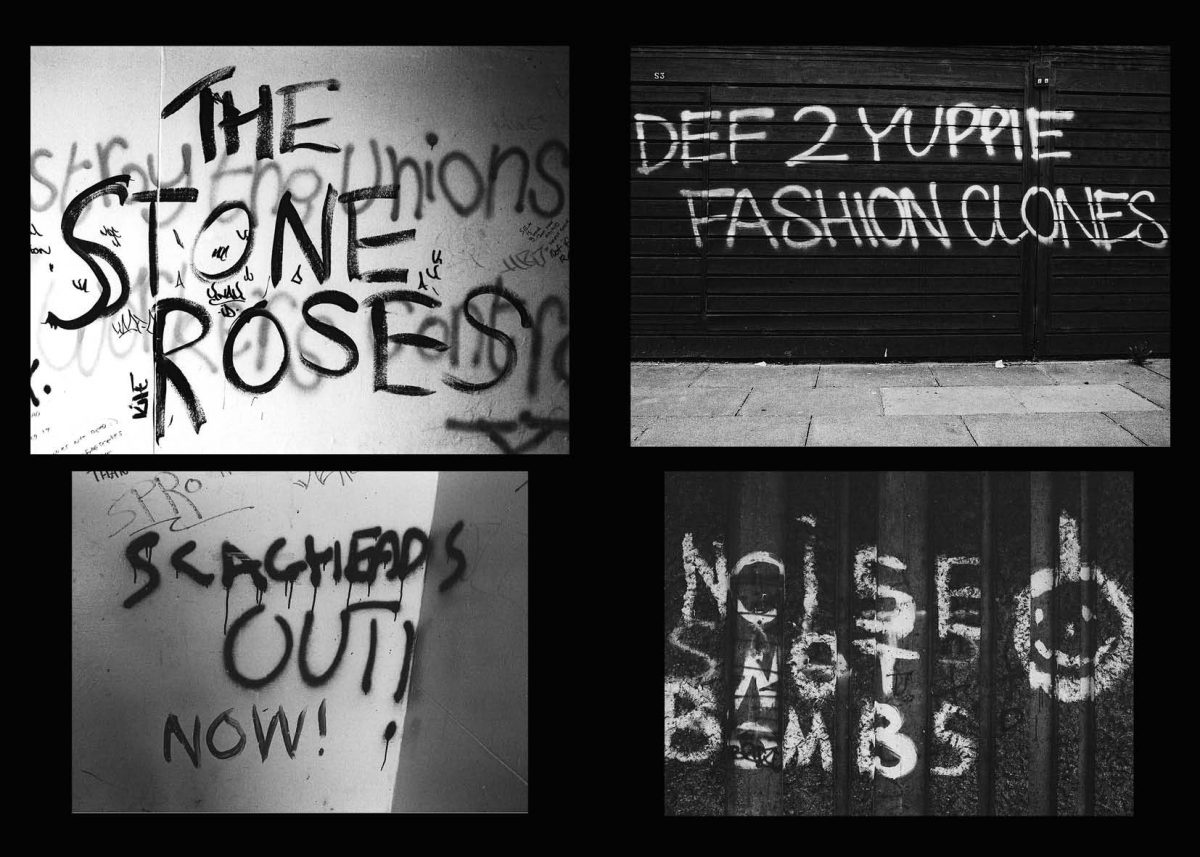
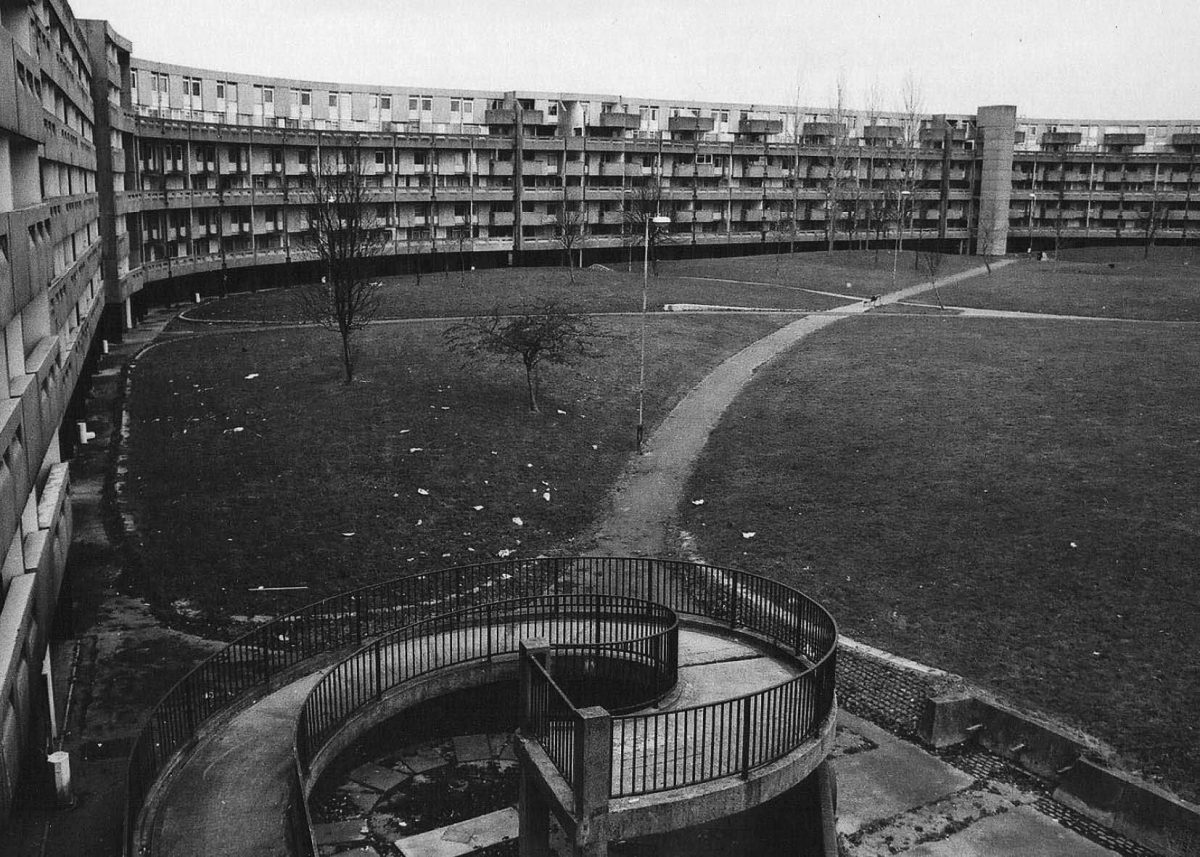














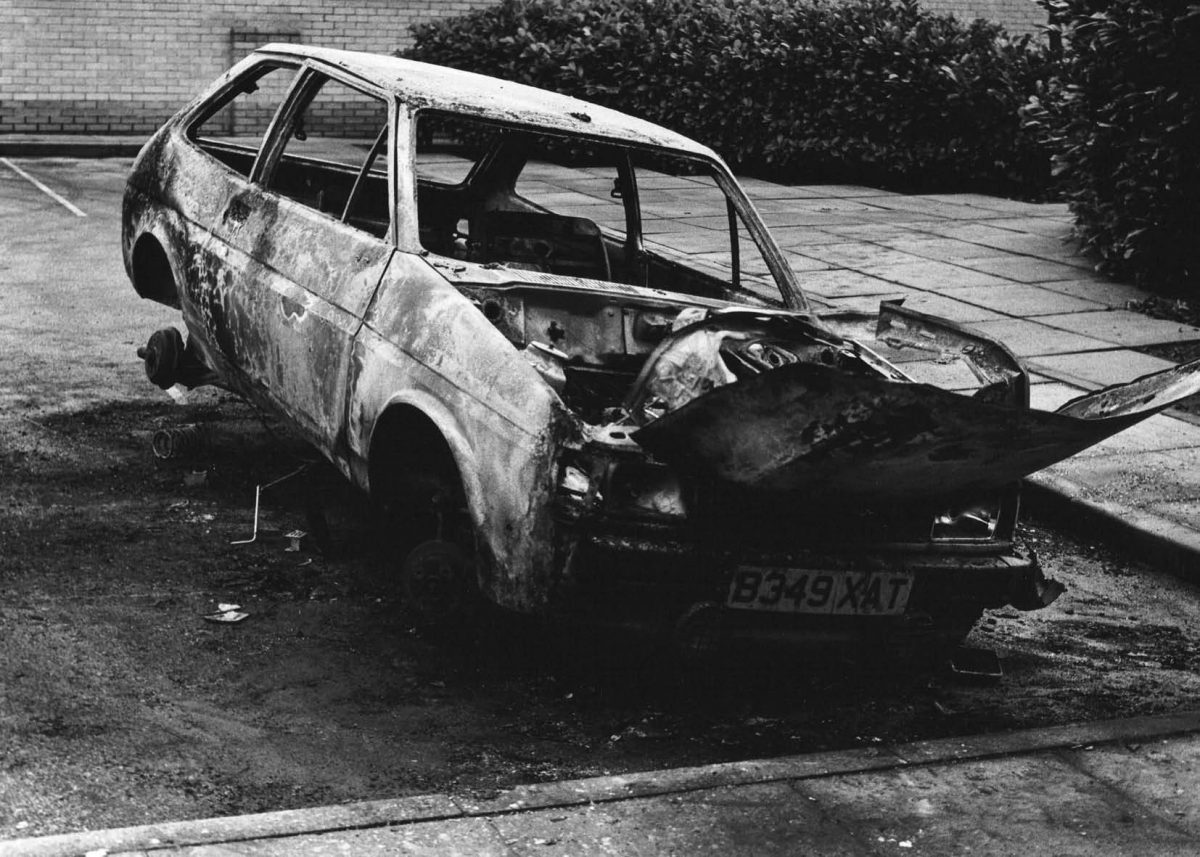
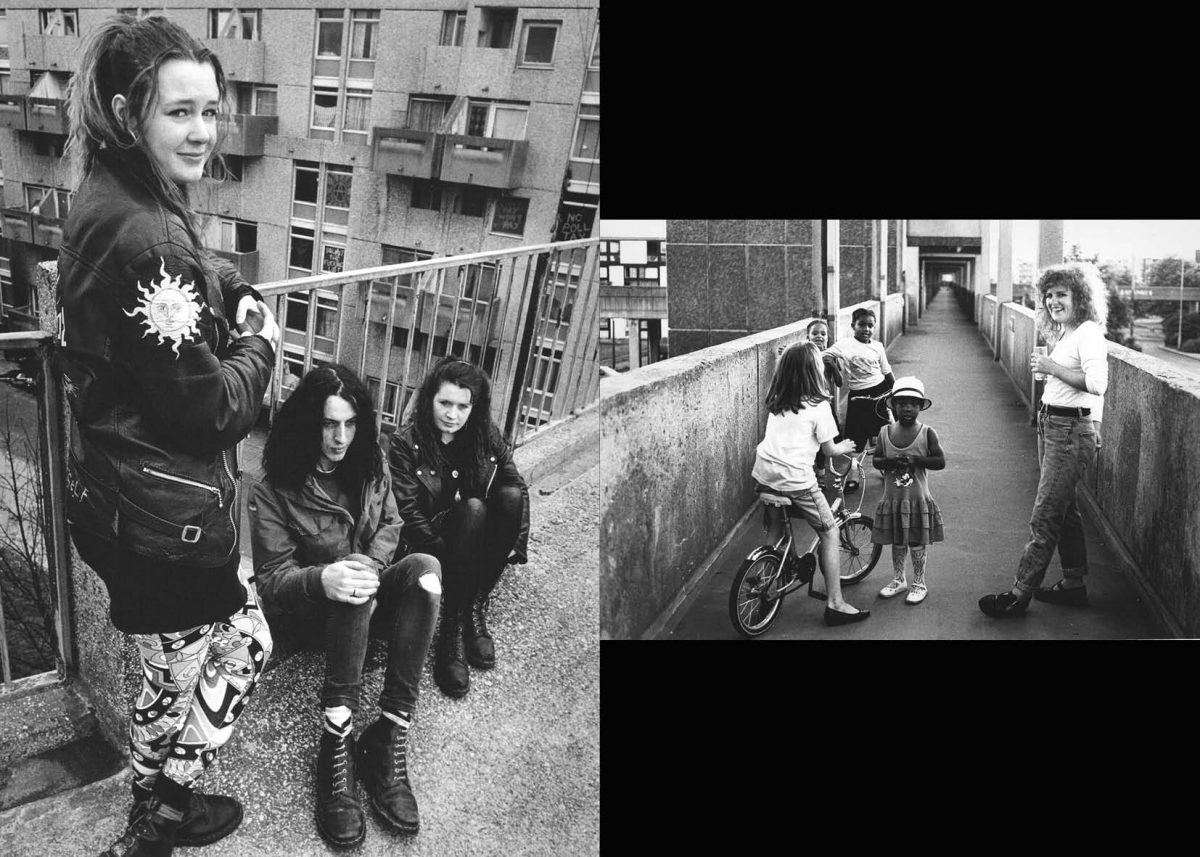












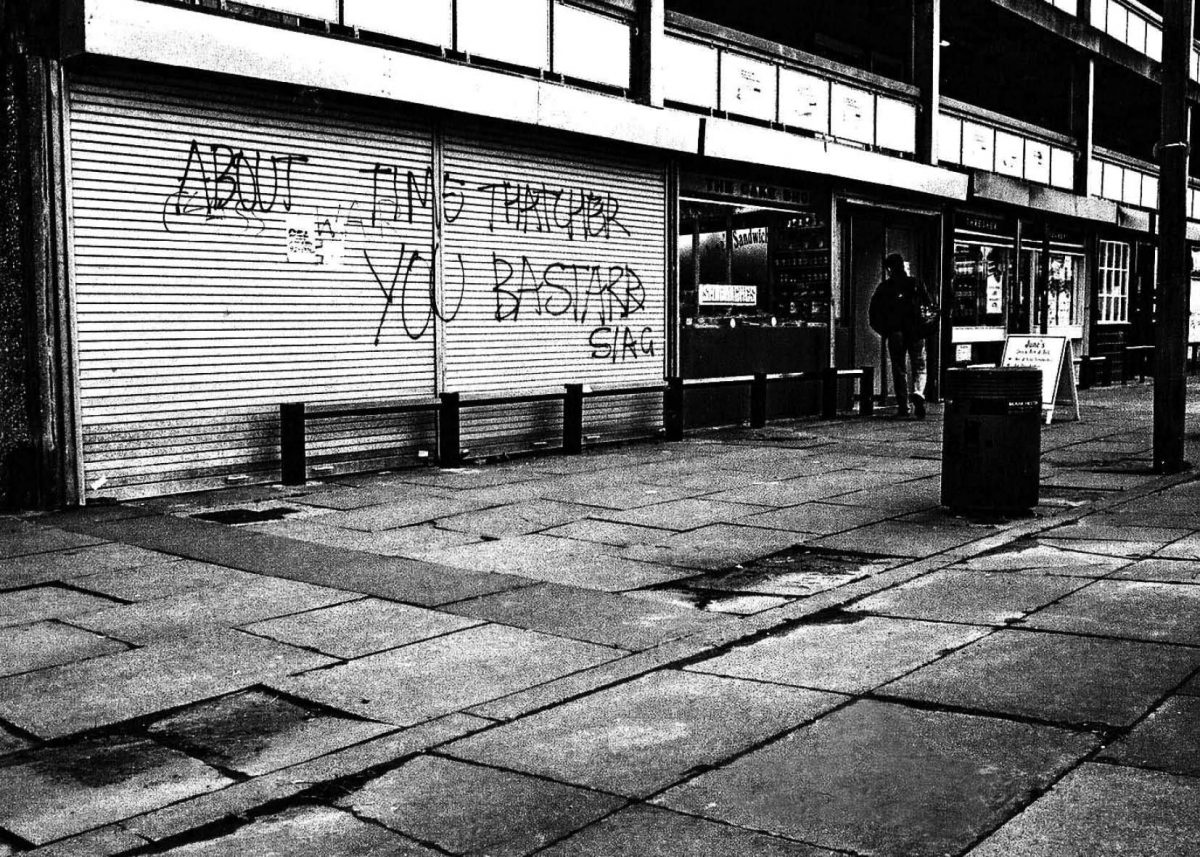

Buy Richard Davis — Tales From The Second Cities Manchester 1988–1992 and Richard Davis — Hulme 1980s–90s by the excellent Cafe Royal Books at the links.
Would you like to support Flashbak?
Please consider making a donation to our site. We don't want to rely on ads to bring you the best of visual culture. You can also support us by signing up to our Mailing List. And you can also follow us on Facebook, Instagram and Twitter. For great art and culture delivered to your door, visit our shop.





